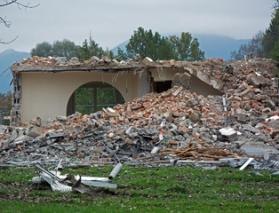The respectable Scientific American has an article on multiple universes, also known as the Multiverse:
Several physicists have argued that a slight change to one of the laws of physics would cause some disaster that would disrupt the normal evolution of the universe and make our existence impossible. For example, if the strong nuclear force that binds together atomic nuclei had been slightly stronger or weaker, stars would have forged very little of the carbon and other elements that seem necessary to form planets, let alone life. If the proton were just 0.2 percent heavier than it is, all primordial hydrogen would have decayed almost immediately into neutrons, and no atoms would have formed. The list goes on.
The laws of physics—and in particular the constants of nature that enter into those laws, such as the strengths of the fundamental forces—might therefore seem finely tuned to make our existence possible. Short of invoking a supernatural explanation, which would be by definition outside the scope of science, a number of physicists and cosmologists began in the 1970s to try solving the puzzle by hypothesizing that our universe is just one of many existing universes, each with its own laws. According to this “anthropic” reasoning, we might just occupy the rare universe where the right conditions happen to have come together to make life possible.
Amazingly, the prevailing theory in modern cosmology, which emerged in the 1980s, suggests that such “parallel universes” may really exist—in fact, that a multitude of universes would incessantly pop out of a primordial vacuum the way ours did in the big bang. Our universe would be but one of many pocket universes within a wider expanse called the multiverse. In the overwhelming majority of those universes, the laws of physics might not allow the formation of matter as we know it or of galaxies, stars, planets and life. But given the sheer number of possibilities, nature would have had a good chance to get the “right” set of laws at least once.
Our recent studies, however, suggest that some of these other universes—assuming they exist—may not be so inhospitable after all. Remarkably, we have found examples of alternative values of the fundamental constants, and thus of alternative sets of physical laws, that might still lead to very interesting worlds and perhaps to life. The basic idea is to change one aspect of the laws of nature and then make compensatory changes to other aspects.
The article goes on to do that and to speculate on the kinds of universes they might create. But notice what is going on here. Supernatural explanations are ruled out “by definition.” And rather than so much as contemplate the existence of God, scientists find it more plausible to believe in lots of different universes, the arguments for which are based on philosophical theory, as far as I can tell, rather than evidence. And notice the fallacy in the notion that if the number of universes approaches infinity, the chances are that one of them would be finely-tuned for life. (No, monkeys typing for a long enough time period would NOT produce the works of Shakespeare. No, Nietzsche’s contention that since time is infinite eventually the same constellation of molecules will come together to create our consciousness again after we die will NOT work.)












